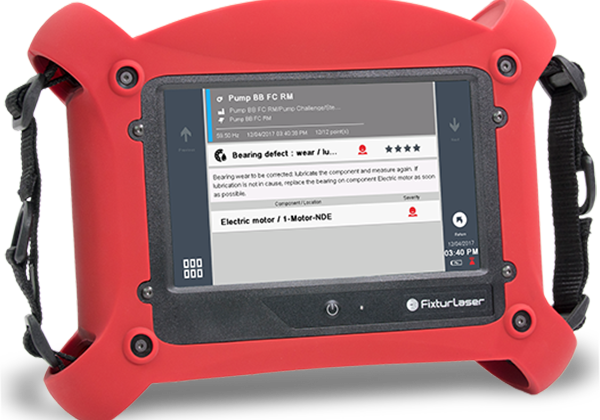The Solution
Rather than rely on hardware alone to solve these challenges, Acoem focused on the creation of a new, targeted remote diagnostics software module that would alleviate the problems associated with unreliable pipe vibration data.
Based on the physics of piping design, isometrics and the dimensions of the piping itself, Acoem leverages specific algorithms to advance piping vibration monitoring technology with a proprietary module that automatically interacts with the customers’ existing Acoem Falcon, Eagle or MV-x to provide real-time and precise vibration measurements and diagnostics with Energy Institute Guidelines and Wachel standards integrated into the system.
Available via the NESTi4.0 AI-driven platform, this powerful remote diagnostics tool gives these customers a thorough understanding of vibration levels on their onshore or offshore assets at any time. That includes identifying the source of the vibration transmission and intensity, empowering them to implement changes to production flow without any risk or safety issues.
Using the same simple traffic light system as other NESTi4.0 diagnostics, the Piping module visually communicates threat levels scaled from 1 to 5 based on real-time changes in vibration, flowrates, temperature variations, gas composition, basic sediment and water (BSW) ratios, pressure and others process parameters.
The Outcome
Major Oil and Gas player in Congo began utilising the Piping module almost two years ago, (prior to its commercial release) for its offshore platform while a second Major Oil and Gas player in Algeria has been using the Piping module for its two complete onshore liquefied natural gas facilities since December 2022.
With ongoing and complete data, these oil and gas facilities now have the remote tools to fully understand the vibration levels at their onshore or offshore sites at any time. The combination of Acoem sensors, the Piping module and NESTi4.0 allows them to easily comply with international industry standards and implement changes to flow rate without risk.
Adding the Piping module to their existing Acoem monitoring protocol is helping them facilitate safe flow rate variations to increase production in the immediate term and enhancing the lifetime of assets in the long term.
Other benefits experienced since the Piping module was introduced at these two sites include:
- Instantaneous, automatic classification of piping vibration according to VDI3842 (Wachel Criteria) and Energy Institute standards via graphical tool
- Being able to identify the exact source and cause of vibration
- Access to raw data for more precise analysis
- The ability to integrate Piping module data into a single user-friendly platform viewable from your mobile device, whether you are using offline (Falcon) or online (Eagle and MV-x) continuous monitoring
- Lower cost of manual monitoring with no need vibration experts on site
- Increased level of operator safety
- A cost-effective solution that uses existing hardware
For more information about adding the Acoem Piping module to your assets, read our press release and product sheet or contact us.











